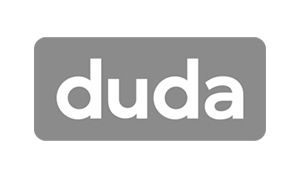Crown Street, Wollongong, 2500
How to Protect Your Website from Google Algorithm Updates: White Hat SEO Techniques and Organic Rankings
Just recently, Google completed its August 2024 core update. While this update is intended to benefit users by promoting quality content in search results, it has also created challenges for some website owners. Many sites that did not align with the new criteria have experienced declines in their rankings, highlighting the importance of staying adaptable to changing algorithms.
In this blog, we will explore effective white hat SEO techniques that can help protect your website from future algorithm updates and maintain your organic rankings. By implementing these strategies, you can not only protect your site from potential penalties but also guarantee that your site stays resilient against algorithm changes while maintaining a strong online presence. Read here to learn more.
What is a Google Algorithm Update?
A Google algorithm update refers to changes made to Google's search ranking systems that determine how websites are ranked in search results. These updates aim to enhance the overall user experience by refining the relevance and quality of the content that appears in search queries.
Why does Google implement these changes?
Google implements algorithm updates to improve the quality and relevance of search results for users. Moreover, these changes are designed to:
1. Enhance User Experience
By prioritising content that is informative, engaging, and valuable, search engines aim to provide users with a better overall experience.
2. Combat Spam and Manipulation
Updates help to eliminate low-quality content and prevent manipulation techniques, such as keyword stuffing and link schemes, ensuring that only legitimate, high-quality sites rank well.
3. Adapt to Changing User Behaviour
As user search habits evolve, search engines adjust their algorithms to meet new expectations and preferences, ensuring they deliver the most relevant results.
4. Promote Freshness and Relevance
Regular updates encourage the inclusion of fresh, up-to-date content, which is essential for maintaining the relevance of search results.
5. Address Emerging Trends
Updates can reflect new technologies and trends, such as mobile optimization and voice search, aligning search practices with current digital environments.
What happens after a Google Algorithm Update?
After a Google algorithm update, websites may experience changes in their search rankings. Some sites may see improvements, while others might drop in position depending on how well they align with the new ranking factors. With this, website owners often review and adjust their SEO strategies to align with the update, focusing on factors like content quality, user experience, and site performance to regain or maintain their rankings.

Understanding the Importance of White Hat SEO Techniques
White Hat SEO refers to ethical, legitimate strategies and practices used to improve a website's search engine rankings while adhering to the guidelines set by search engines like Google. Unlike "Black Hat SEO," which involves manipulative or deceptive tactics that can lead to penalties, White Hat SEO focuses on providing valuable content, improving user experience, and optimising a site in a way that benefits both search engines and users.’
Importance of White Hat SEO Techniques
White hat SEO techniques are crucial for achieving sustainable and ethical search engine optimisation results. Here are some key reasons why they are important:
1. Long-Term Success
White hat SEO adheres to search engine guidelines, which prevents penalties and maintains high rankings over the long-term. They focus on creating high-quality, relevant content and optimising user experience, leading to sustained organic traffic and user engagement.
2. Trust and Credibility
By adhering to ethical practices, white hat SEO helps build trust and credibility with both search engines and users. High-quality content, relevant keywords, and a positive user experience contribute to a trustworthy online presence.
3. Improved User Experience
White hat SEO emphasises creating valuable, relevant content and optimising user experience. This not only helps attract visitors but also keeps them engaged, leading to lower bounce rates and higher conversion rates.
4. Avoiding Penalties
Search engines like Google have strict guidelines against manipulative tactics, such as keyword stuffing and link schemes. White hat SEO techniques reduce the risk of penalties and potential blacklisting, keeping your website in good standing.
5. Building Organic Growth
White hat SEO fosters organic growth by focusing on high-quality content, natural link-building, and ethical practices. This approach helps attract genuine traffic and build a loyal audience over time.
6. Positive Brand Reputation
Ethical SEO practices enhance your brand’s reputation and credibility. A reputation for integrity and quality can lead to positive reviews, recommendations, and referrals from satisfied customers.
7. Sustainable Results
Unlike black hat SEO techniques, which may provide quick but short-lived results, white hat SEO guarantees that the improvements made are aligned with search engine guidelines.
White Hat SEO Techniques to Protect Your Site from Google Algorithm Updates
White Hat SEO involves ethical practices that meet search engine standards. By following these guidelines, your website is less likely to face penalties from algorithm updates. This helps maintain or improve your site's ranking, even when changes occur. Here are some key strategies to consider:
1. Create High-Quality, Relevant Content
Quality content drives success that’s why creating valuable, informative, and engaging content should be your primary focus. Aim to address your audience's needs and provide answers to their questions. High-quality content not only satisfies user intent but also encourages other sites to link back to your content, which can improve your authority and rankings. Make it a point to regularly update your content to keep it relevant and accurate. Use keyword research tools to identify topics your audience is searching for and optimise your content around those keywords.
2. Optimise for User Experience (UX)
A positive user experience is essential for retaining visitors and improving your rankings. Focus on website elements that enhance usability, such as fast loading times, mobile-friendliness, and intuitive navigation. Use tools like Google PageSpeed Insights to analyse and improve your site’s speed, and to check if it is responsive and performs well on various devices.

3. Build Natural, Quality Backlinks
Backlinks from reputable and relevant sites signal to search engines that your content is trustworthy and authoritative. Focus on earning backlinks through genuine relationships, guest blogging, and providing valuable resources. Avoid link schemes or buying links. Instead, build relationships with industry influencers and contribute valuable content that naturally attracts backlinks.
4. Follow On-Page SEO Best Practices
On-page SEO involves optimising individual pages to improve their search engine ranking. This includes using appropriate meta tags, headers, and alt text for images. Optimise your meta titles and descriptions to be clear and relevant to the content. Use header tags (H1, H2, H3) to structure your content and make it easy for users and search engines to navigate.
5. Monitor and Analyse Your SEO Performance
Regularly tracking your SEO performance helps you understand how well your strategies are working and identify areas for improvement. Use tools like Google Analytics and Google Search Console to monitor your traffic, rankings, and user behaviour. Set up alerts for significant drops in traffic or rankings. Analyse these changes to identify potential issues and adjust your strategies accordingly.
6. Avoid Penalties by Staying Compliant
To avoid penalties from future algorithm updates, make sure that all your SEO practices adhere to search engine guidelines. Focus on providing genuine value to your users and maintaining transparency in your SEO efforts. Stay informed about SEO best practices and algorithm changes by following industry news and updates.
Takeaway
Managing Google algorithm updates can be challenging, but with the right strategies in place, you can effectively protect your website and maintain your rankings. By applying white hat SEO techniques, you can build a strong website that not only withstands algorithm changes but also thrives in the competitive digital landscape.
At Love My Online Marketing, we build websites designed to withstand Google algorithm updates by implementing white hat SEO techniques. Our team not only stays compliant with Google’s guidelines but also adapts to emerging trends and changes in user behaviour, making sure your website maintains strong organic rankings. Get in touch with us to learn how we can help protect your website.

Love My Online Marketing has 10+ Years of working alongside businesses and helping them grow. Discuss your options for online success from website Design and Development through to Google Marketing.
Do you want more traffic and business leads?
Love My Online Marketing is determined to make a business grow. Our only question is, will it be yours?



























